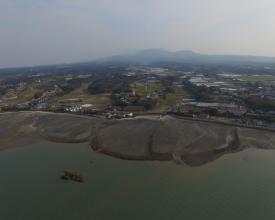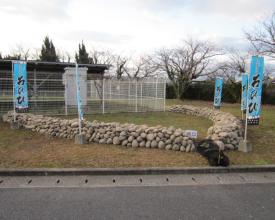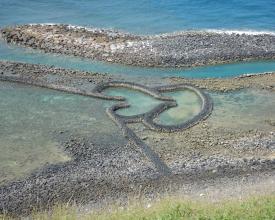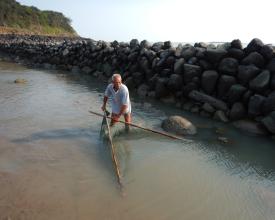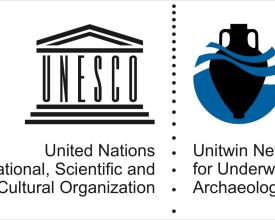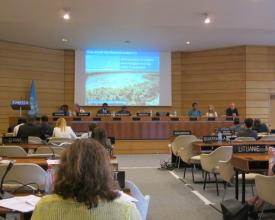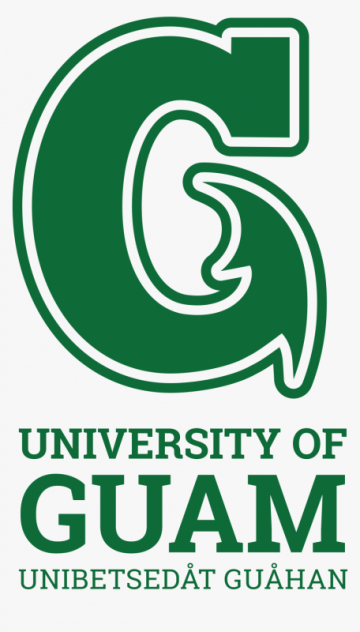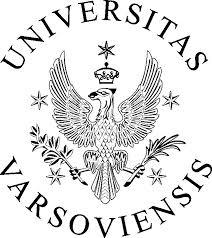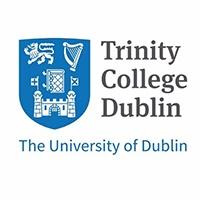
Safeguarding the Underwater Cultural Heritage of Stone Tidal Weirs on the Earth
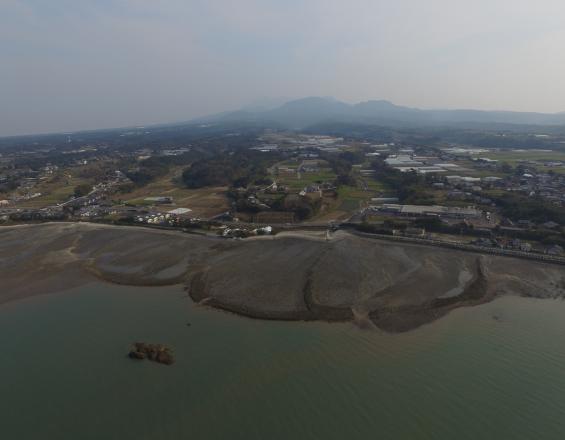
Stone tidal weirs are a type of fish barrier operated by tidal amplitude. These structures are made of large rocks, extending along the shoreline on a colossal scale in semicircular, arrow-like, or almost linear shape. These weirs are completely submerged during high tide, and they emerge into full view at low tide, allowing people collect fish.
They are located within seascapes created and maintained by the harmonious interactions between humans and marine ecosystems. Although they are on the verge of disappearance because of costal developments and global climate change, their role as eco-friendly fishing gear, womb for sustaining marine biodiversity, and tourist attraction has started attracting international attention.
This solution focuses on the cooperation established by universities and coastal communities to raise awareness on the role of stone tidal weirs and the connected traditional ecological knowledge of coastal communities as the cultural heritage.
Context
Challenges addressed
- Environmental challenges: need to assess the impact of ocean climate change on stone tidal weirs, and their connected marine ecosystems. Today, some weirs only catch plastic debris from nearby towns.
- Cultural and social challenges: stone tidal weirs should be designated by local and national governments and recognize in policy as underwater cultural heritage.
- Economic challenges: need to balance stone tidal weirs and modern coastal developments. Stone tidal weirs have the potential to support healthy coastal communities and marine environments.
Location
Process
Summary of the process
Under the framework of the UNESCO Convention on the Protection of the Underwater Cultural Heritage, international organizations such as UNESCO, the UNESCO UNITWIN Network for Underwater Archaeology, and ICOMOS-ICUCH have to raise awareness of stone tidal weirs as underwater cultural heritage and in supporting marine biodiversity. This also includes raising the awareness of policy makers in countries that have not ratified the Convention, as well as continuing to provide high-level academic research upon stone tidal weirs on the basis of the international network.
The solution focuses on fostering the traditional ecological knowledge of coastal communities, including the contribution of such knowledge and stone tidal weirs in biodiversity conservation, and on assessing the impact of the global climate change. At local level, stone tidal weirs are abandoned when indigenous communities or community-based movements lose their interests in the heritage. In many places, therefore, NGOs or NPOs organized by local communities and stakeholders are active for safeguarding or reviving stone tidal weirs; academics could mediate between international organizations and them.
Building Blocks
Establishing the international network for safeguarding stone tidal weirs
The cross-cultural and multi-disciplinary study of stone tidal weirs and efforts to raise awareness require the establishment of an international network.
The academic core consists of the three member universities, part of the UNESCO UNITWIN Network for Underwater Archaeology: the Tokyo University of Marine Science and Technology, the University of Guam, and the University of Warsaw. The network enhances the protection and research efforts on underwater cultural heritage by connecting universities and professional training institutions, and acting as a bridge between academia, civil society, local communities, and policy makers.
On the other hand, local NGO or NPO organizations play a central role in safeguarding or reviving stone tidal weirs. As an intermediary the academic core builds relationship between coastal community stakeholders, including NGOs or NPOs, and international organizations, including the UN, UNESCO, ICOMOS, plus local and national governments.
Enabling factors
The UNESCO UNITWIN Network for Underwater Archaeology offers a formal platform to connect member universities and training institutions. The academic core mediates between the local and international worlds, focusing on recognizing the importance of stone tidal weirs as underwater cultural heritage.
Local communities are not always aware of the global and iconic relevance of stone tidal weirs as heritage assets. Academics act as mediators and provide good advice and appropriate information on stone tidal weirs to coastal communities.
Lesson learned
Each coastal community having stone tidal weirs seems to face similar difficulties, as well as similar environmental and social problems.
The international network provides local communities the opportunity for examining and solving them on the global base.
Conferences and workshops organized by universities, some of which belong to the UNESCO UNITWIN Network for Underwater Archaeology, involve not only academics but also representatives of coastal communities and stakeholders, policy makers, or governmental officials.
Recognizing stone tidal weir as an important type of underwater cultural heritage
The UNESCO UNITWIN Network for Underwater Archaeology and the ICOMOS International Committee on the Underwater Cultural Heritage (ICOMOS-ICUCH) act on the implementation of the UNESCO Convention on the Protection of the Underwater Cultural Heritage, which in its Article 1-1 defines ‘underwater cultural heritage’ as all traces of human existence having a cultural, historical or archaeological character which have been partially or totally under water, periodically or continuously, for at least 100 years.
All stone tidal weirs are partially or totally under water during certain periods of time. Almost all stone tidal weirs, or at least their bases, all over the world are likely to have been constructed more than 100 years ago. This Convention is the first international law which acknowledges stone tidal weirs as cultural heritage that needs to be protected. Many countries have not ratified it and there is the need to continue to raise awareness on the Convention.
Enabling factors
The UNESCO UNITWIN Network for Underwater Archaeology and ICOMOS-ICUCH are the most influential organizations supporting the implementation of the UNESCO Convention on the Protection of the Underwater Cultural Heritage.
These netwroks are often connected, for example, the Tokyo University of Marine Science and Technology is a member institution of the UNESCO UNITWIN Network for Underwater Archaeology and the person responsible is also the Japanese national representative in the ICOMOS-ICUCH.
Lesson learned
The UNESCO Convention on the Protection of the Underwater Cultural Heritage is far from global ratification and it is not well-known among national policy-makers. The academic channels of the UNESCO UNITWIN Network for Underwater Cultural Heritage and the ICOMOS-ICUCH are necessary to continue to raise awareness on the Convention.
Documenting the traditional ecological knowledge on fishing, ritual, or other communal activities connected to stone tidal weirs
The underwater cultural heritage of stone tidal weirs was originally born as a local fishing mechanism. The processes are based on a rich local traditional ecological knowledge, which brought on by members of local coastal communities. Traditionally, local communities used stone tidal weirs twice a month during the spring tide; a custom that has been preventing overfishing by locals. At high tide they sometimes functioned as fishponds.
The traditional ecological knowledge, for instance, on non-fishing periods, as well as that on fishery-related ritual activities such as beach opening ceremonies, is widely observed at coastal communities but it is rapidly disappearing before being recorded properly by anthropologists or archaeologists. As stone tidal weirs are easily broken by typhoons or high waves, frequent community-led repairing works based on traditional knowledge are absolutely needed. In case stone tidal weirs are abandoned, however, both communal spirit and traditional ecological knowledge would extinct.
Enabling factors
The traditional ecological knowledge, which each coastal community owns, is not only the key for the conservation of stone tidal weirs but also for their wellbeing. Seafood from stone tidal weirs is sustainable and healthier than imported canned or processed food.
Through formal and informal partnerships between universities and coastal communities, educating younger generations with such knowledge is one of the important success factors in preserving traditional ecological knowledge.
Lesson learned
Stone tidal weirs provide prosperity and sustainability for coastal communities, and documentation efforts support building local capacity and social capital for the long term.
Gathering data on them and their related traditional ecological knowledge is done both in the field and in archieves and libraries. As for the latter, such knowledge might have existed only in written archivel documentsas many communities have lost their traditions because of modernization and globalisation.
Analyzing the vulnerability of stone tidal weirs against the global climate change such as sea level rise, coastal erosion, or destructive storms
Stone tidal weirs are the most vulnerable against global climate change. Recent field surveys and participant-observations of them prove that many stone tidal weirs have been abandoned or simply left broken, owing mainly to ocean environmental change. If sea levels rise more than 1 meter, all stone tidal weirs on the earth do not function as fishing gear. Once they are destroyed by storms or high waves, some coastal communities cannot afford to repair them, leaving simply them abandoned. All over the world, indeed, the underwater cultural heritage of stone tidal weirs is in danger of closing down, as cultural heritage as well as traditional fishing gear. For the purpose of understanding their vulnerability properly, the assessment of long-termed tidal range changes around stone tidal weirs, the measuring of coastal erosions faced by them, and the impact monitor of typhoons or high waves which destroy stone tidal weirs have been conducted, occasionally by help of remote sensing data.
Enabling factors
The university networks allows to raise awareness on the issue and provide research-based evidence.
Many national governments do not recognize stone tidal weirs as underwater cultural heritage or even as fishing gear, mainly because in their mind gears are modern fishing boats or nets owned by professional fishers. Stone tidal weirs are often owned by people living in coastal communities, not by fishermen, against whom especially global climate change would cause havoc.
Lesson learned
Unless local or national governments recognize stone tidal weirs as cultural heritage, there is no way they could become interested in their vulnerability against the global climate change. It really is essential that multiple stakeholders, including policy makers, social scientists such as anthropologists, natural scientists such as oceanographers, environmentalists, NGO or NPO partners, or local people, work together on this matter.
Evaluating the contribution of stone tidal weirs in safeguarding biocultural diversity
Without doubt, stone tidal weirs contribute to marine biodiversity. In comparison with intertidal zoneswithout stone tidal weir, those with stone tidal weirs have host diverse marine species.
Once stone tidal weirs are abandoned, the less fish is caught. As the attention of local people shifts to destructive modern fishery, all aspects connected to cultural diversity would also be disappeared. In order to maintain coastal communities sustainable, they must not lose their biocultural diversity; stone tidal weirs could be served as an icon of such diversity as well. The UNESCO UNITWIN university network researches and studies how stone tidal weirs in safeguarding biocultural diversity.
Enabling factors
The underwater cultural heritage of stone tidal weirs seems to have been an artificial womb for marine species and it is It one of the oldest fish catching methods for human beings. Qualitative and quantitative data analysis are necessary to research the role of stone tidal weirds as marine ecosystems. As for the latter, both archaeological and historical research is the most helpful.
Lesson learned
When stone tidal weirs are studied, interdisciplinary collaboration between social science and natural science is really necessary. In the US, archaeology and anthropology are included in social science. Oceanographers or marine biologists provide natural scientific data upon biodiversity, while social scientists combine natural scientific data with social scientific one and use them for design and planning purposes.
Impacts
This solution focuses on the work done in fostering the inclusion of coastal communities, as well as local and national governments, in the safeguarding and conservation of stone tidal weirs.
- Environmental: the management and protection of the underwater cultural heritage of stone tidal weirs are directly interconnected with the traditional ecological knowledge and customs of coastal communities. In addition, this cultural heritage along the shore is more vulnerable against climate changes such as sea level rise or destructive storms.
- Cultural and social: in several places, community-based movements of restoring or rebuilding stone tidal weirs have already begun. Researchers, anthropologists and archaeologists, are working together with the coastal communities that use the stone tidal weir as a site of research and environmental education for younger generations.
- Health: fresh and free catches from stone tidal weirs have improved community health, since higher-nutrient fish has contributed to the well-being of people, including lower child mortality, improved cognitive performance, and strengthened immune function.
- Economic: tourism around stone tidal weirs could play in raising awareness with the wider public.
Beneficiaries
The main beneficiaries of this solution are coastal communities including local NGOs and NPOs, local and national governments, maritime anthropologists and archaeologists, as well as international organizations such as the UN, UNESCO, or ICOMOS.
Sustainable Development Goals
Story
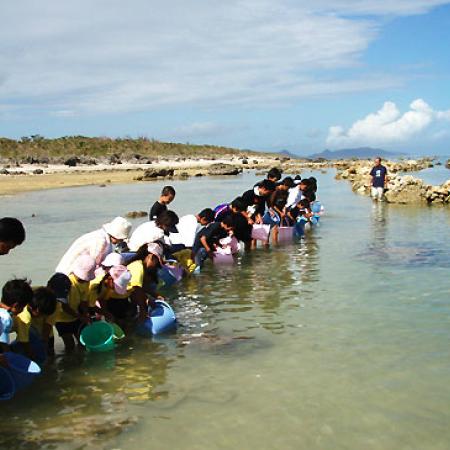
Shiraho hamlet on Ishigaki island (Ryukyu archipelago, Japan) used to have more than 10 stone tidal weirs, but by the end of the 1960s the last one was abandoned, simply because it did not manage to catch fish as much as in older times, being easily broken by typhoons or heavy waves.
In 2005, the NGO organization Shiraho Conservation Council for Bountiful Seas (SCCBS) was established to foster community-based coral reef conservation. The council spent 2006 reconstructing a stone tidal weir, mainly for the purpose of stopping soil from agricultural lands flowing off and destroying local coral gardens. This also supported local communities settled in these areas to have interest again in healthy and resilient inshore areas.
In addition to members of the NGO organization, local school pupils and their PTA groups participated in the reconstructing activities.
As a proper understanding of the stone tidal weir and its ecological function have expanded among all generations in Ishigaki island and eco-tourists to the island, the council succeeded in holding the 3rd Summit Conference on Stone Tidal Weirs at Shiraho hamlet in 2010.
M. Kamimura, 2017, Shiraho Hamlet and the Summit Conferences on Stone Tidal Weirs in Japan, in M. Tawa, ed., Landscapes Having Stone Tidal Weirs, Nishinomiya: Kwansai Gakuin University Press, pp. 21-33.

